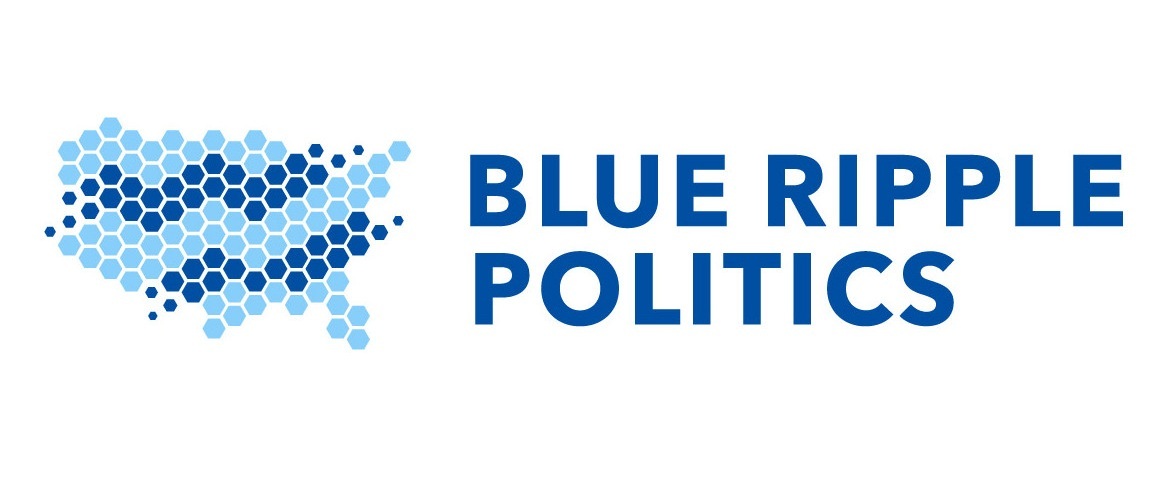In the run-up to the 2022 elections, Blue Ripple decided to focus on partnering with successful Democratic fundraisers to help them identify high-impact candidates for state legislature. In this post, we’ll describe why we chose this focus and give a specific example of how our data helped one of our partners.
Looking ahead, we want to do this even more! We continue to donate our analytic efforts at zero cost and with no compensation. So, if you’re interested in mobilizing donors to support Dem candidates for state legislature, please reach out and see how we can work together!
(Note: Since we posted this, we’ve done even more to help inform state legislature donors. Click here for details.)
Background: What we do
Since our founding in 2019, our fundamental goal at Blue Ripple has been to use data to help guide high-impact donations to Dems. Our analytics, based on demographic models that we continually refine (details here), aim not to predict who will win a given race, but identify where Dem candidates could plausibly win, in this cycle or soon after, if they received sufficient support.
We are particularly interested in state legislature races. These are important battlegrounds for many issues of high-interest to progressives, but they don’t get nearly as much attention as Federal races: The “bang per buck” of donating to state legislature candidates is very high due to high impact and overall lower cost of these races, but most Dems under-donate to them relative to U.S. House and Senate. (We also use our model to identify high-impact U.S. House donation opportunities, because of the high interest from donors, but that’s not our main focus.)
We previously used our demographic model to raise funds for state legislature candidates from our own small list of interested donors. However, our main strength is data analysis, not donor engagement. In the run-up to the 2022 elections, we decided to focus on donating our modeling expertise and insights to organizations that were already working with highly engaged Democratic donors, but wanted data-driven advice on specific state legislature candidates to support.
Example: Our 2022 partnership with Sawbuck Patriots
Through the Donor Organizer Hub, we were connected to Alex Clemens at Sawbuck Patriots. Alex solo-ran a successful campaign in 2020 in which he sent a daily email to encourage donors to support a single candidate with a $20 (sawbuck) donation. That effort raised over $780,000 for 58 Dem candidates for U.S. House and Senate.
In 2022, Alex was fired up to repeat the Sawbuck model, but he wanted to expand the focus to include Dem state legislature candidates who looked promising based on analytics.
In supporting Sawbuck, our model identified 21 promising Dem candidates for state legislature in Michigan, Pennsylvania, and Nevada. We chose those states because they offered “multi-word score” opportunities where state legislature donations could also help up-ballot Dem candidates for U.S. House, U.S. Senate, Secretary of State, and/or Governor. Sawbuck’s donors responded enthusiastically, and gave over $27,500 to those candidates, i.e., an average of over $1,300 each. That’s not too shabby, considering that the average state legislature candidate’s total fundraising is in the low six figures!
What Blue Ripple delivered
In our analyses for Sawbuck, we used our model to calculate the “intrinsic” Democratic lean of each state legislature district, based on estimated preference and turnout data for various demographic subgroups. (Details available here.) We compared that to the “historical” results (how ballots were actually cast in that district), as well as factoring in overlaps with competitive federal house races.
In these initial efforts, we focused our attention on state legislature districts already identified as high-priority by the DLCC as a proxy for candidate quality. Within that list, we looked for districts where both our model and the historical results agreed that the race was “close enough” (within, say, 45% to 55% Dem) that GOTV efforts by Dems could make a difference.
Besides reporting the results of the demographic and historical models, we also provided three additional key stats for each district: relative population density; the percentage of whites with college degrees; and the total percentage of voters-of-color – these three factors are known to be important Democratic demographics and they also play a big role in our model.
As an example, in Michigan’s SD-12 our model predicted a Dem share of 56%, even though the historical model was more conservative (49% D). We were encouraged by the district’s relatively high population density and college grad percentage among whites, and it seemed from our model that its middle-of-the-road racial diversity was not a significant barrier for Dems:
And sure enough, this ended up being a close but winnable race! Incumbent Kevin Hertel beat his Republican challenger by just 313 votes out of over 125,000 ballots cast. This is exactly what we were hoping to see: a close contest where a fundraising boost could plausibly make the difference.
Looking ahead
We are thrilled that Sawbuck Patriots was able to make use of our analytics to successfully identify and raise funds for promising Dem candidates for state legislature in 2022 – and we’d like to do more of this sort of work!
Looking ahead, we are interested in partnering with other groups or individuals who have “donor networks” that are engaged and excited to support Dem candidates, but need help identifying the most impactful ones to support in state legislatures.
(Note: Since we posted this, we’ve done even more to help inform state legislature donors. Click here for details.)
We are offering to help free-of-charge – Blue Ripple doesn’t accept any payments for our analyses or any portion of funds raised for candidates. We just ask for appropriate recognition.
So, if your group of Dem donors wants to help support the blue wave in state legislatures, please contact us! We are fired up to do our part in the off-cycle state legislature contests in 2023 and the larger batch of races in 2024.


